A Complete Guide to Chefchaouen, Morocco: The Blue City of the Rif Mountains
Have you ever wanted to enter a fairytale world of blue-coloured streets and buildings? Look no further than Chefchaouen, the Blue City of Morocco nestled in the Rif Mountains. This picturesque town has been gaining popularity on social media for its stunning blue-washed walls and authentic atmosphere. With this complete guide, you can discover the rich history, unique shopping experiences, and must-see sights of this hidden gem in northern Morocco. From wandering the winding streets to petting the local cats, there's something for everyone in Chefchaouen. So pack your bags and get ready to explore the enchanting blue world of Chefchaouen.
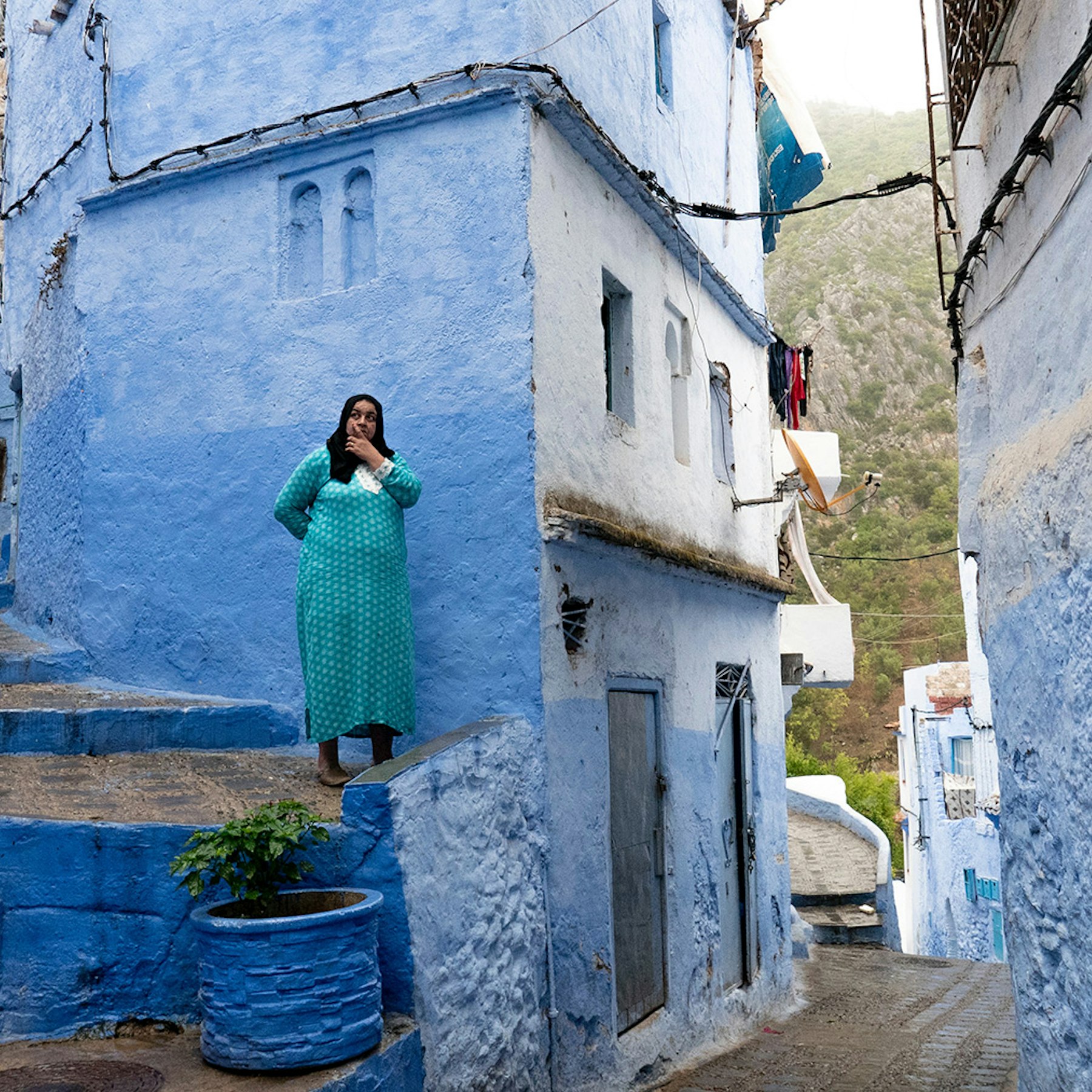
Brief background on Chefchaouen
Chefchaouen is a charming small town in northern Morocco known for its blue-painted buildings and winding streets. The town was founded in 1471 by Mulay Ali ibn Rashid al-Alami to defend against the newly Portuguese-controlled Ceuta. Chefchaouen is heavily influenced by its Muslim and Jewish refugees from Spain during the late 15th century, who gave the town a unique blend of Moroccan and Andalusian culture. The town was mostly isolated and untouched until the recent wave of tourism, which has caused a spike in the town's popularity thanks to the dreamy images shared by travellers on social media.
The town derives its name from the Berber word "sháouen" which means "two horns," referring to the twin peaks that tower over the town. However, foreigners know it as "The Blue City" due to its distinctive blue-painted walls. While the reason behind the blue colour is still unclear, theories suggest that Jews painted the walls blue to symbolize the sky and heaven, blue keeps the houses cooler in summer, and the houses were painted blue in the 1970s to attract more tourists.
Chefchaouen is home to many cats, and they're well-fed and happy. However, Moroccan men can be quite annoying with their catcalling, but they treat their feline friends well. Chefchaouen has a relaxed atmosphere, making it a perfect destination to experience Moroccan culture without the hustle and bustle of other busy cities. It's also an ideal place to relax in one of its hammams or hike in the nearby mountains. [1][2]
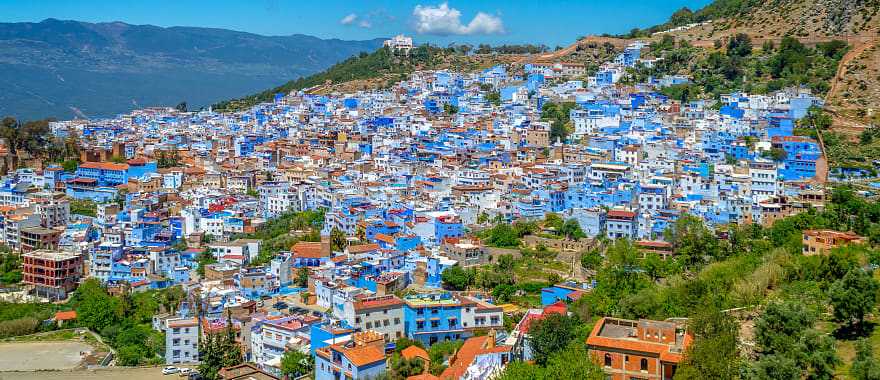
Overview of the town's popularity among tourists
Chefchaouen, or the Blue City of the Rif Mountains, has become a popular destination among tourists worldwide. It's not surprising that the town draws in crowds, given how unique and picturesque it is. The blue-hued alleyways and staircases make for an Instagram and Pinterest dream destination. As writer Emma Frew explains, "Chefchaouen was definitely on the top of my list."
Aside from the visual appeal, Chefchaouen is a more relaxed way to get used to Moroccan culture instead of busier cities like Marrakesh or Casablanca. According to the traveller and photographer Johannes Richter, "After we saw a photo online, we knew we had to see the blue Moroccan city in person. The journey to the mountains where the blue city lies would be worth our time."
The town has its attractions, with key sights worth seeking, including the Place Outa Hammam, Dar Moulay Idriss shopping, and the Grand Mosque. The Kasbah Museum provides insight into the history and culture of the region. At the same time, the Ras El Maa waterfall offers a scenic spot to relax and take in the area's natural beauty. Additionally, tourists can enjoy a traditional hammam, a perfect way to unwind after a long day of exploring.
With its charming blue streets, unique culture, and stunning surroundings, it's no surprise that Chefchaouen has become a must-visit destination among travellers. As Emma Frew notes, "The village is just like a photographer's dream." [3][4]
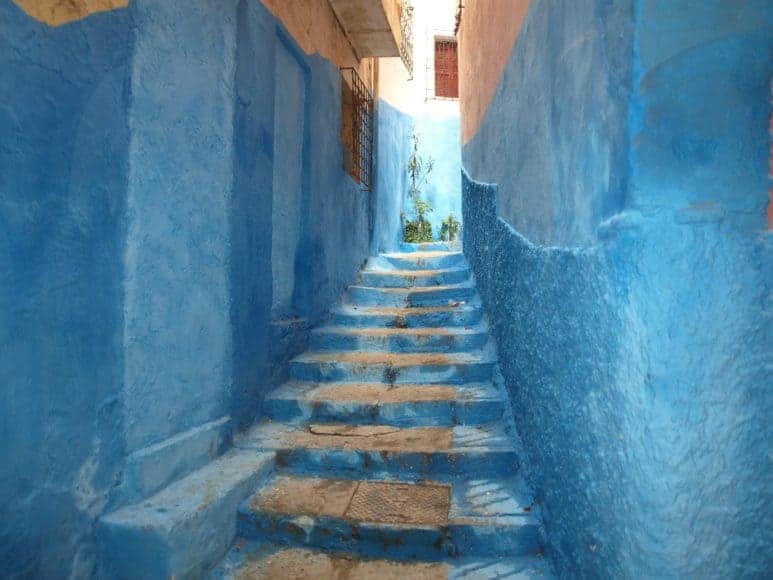
The winding blue streets of Chefchaouen
The winding blue streets of Chefchaouen are a sight to behold. This stunning mountain outpost in Northeastern Morocco is set within the breathtaking backdrop of the Rif Mountains. Nearly all homes are painted blue, creating a surreal and calming atmosphere. As you wander through the narrow alleyways, the call to prayer rings out from the mosque, and a goat herder leads his flock through the town.
According to Osiris Tours, "Walking through the streets of Chefchaouen makes you feel like you are wandering through a dream." The buildings have facades the colour of crushed blueberries, doors the hue of a robin’s egg, and archways in shades of azure, cobalt, indigo, sapphire, cyan, and peacock. The myriad shades of blue create a feast for the eyes.
Chefchaouen is known as "The Blue City" and was founded in 1471 as a base for Moroccans to fight off the invading Portuguese. Its name means "Watch the Horns" in the Berber language, which refers to the distant horn-shaped mountains. In the years following, it became a retreat for Muslim and Jewish minorities who were leaving Europe. It was isolated for half a millennium, and it wasn’t until the beginning of the 20th century that Spain captured it and opened it to the outside world once more.
Kimkim says, "Many people come here to relax in one of the hammams or hike in the nearby mountains, so you may want to allow yourself some extra days." The compact medina is the main attraction, and most of your time will be spent wandering through the winding blue streets, taking photos of brightly coloured pots and shopping at textile and leather shops.
The Grand Mosque, built by Moulay Mohamed in 1560, is the city's oldest and largest place of worship. At the Kasbah Museum, you can visit a garden, a museum, and some of the old prison cells used during Spanish rule. The Ras El Maa waterfall is just outside the city and offers refreshing rock pools for swimming. Relaxing in a hammam is also a popular activity.
As Osiris Tours says, "Chefchaouen is a popular attraction for visitors as well as a photographer's dream destination. Take a guided tour or explore independently, but don't miss the beautiful blue streets of Chefchaouen." [5][6]
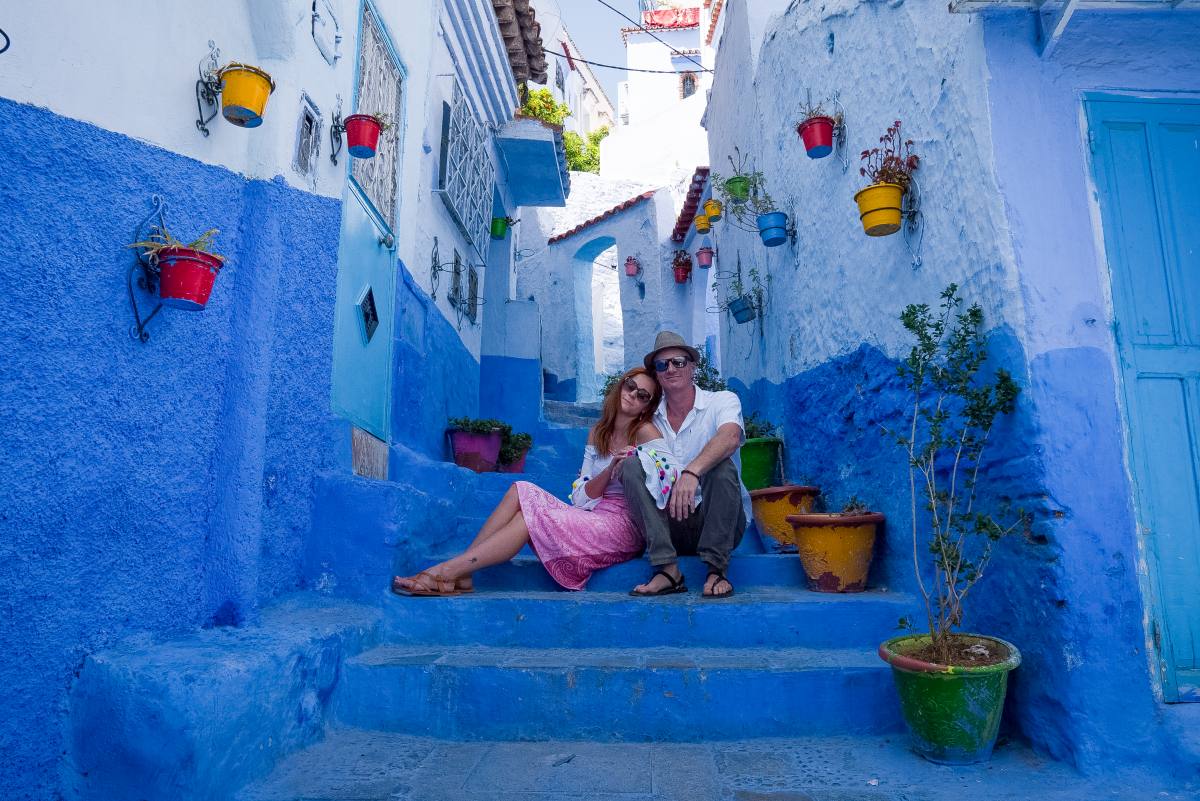
Key sights worth seeking out
Once you step foot in Chefchaouen, the stunning blue hues first grab your attention. But this charming Moroccan town has more than just blue buildings to offer. Here are some key sights worth seeking out while exploring this gem of the Rif Mountains:
- Place Outa Hammam: The main square of Chefchaouen is a hub of activity with plenty of restaurants and cafes. Perfect for people-watching, refreshing mint tea, or grabbing local souvenirs.
- Shopping at Dar Moulay Idriss: This funky emporium is located toward the top of the medina on Rue Targui and is a great spot to purchase hand-knitted hats of various sizes, shapes, and colours.
- Grand Mosque: With its roots dating back to 1560, this is the city's oldest and largest place of worship. Though non-Muslims cannot enter, the magnificent exterior is well worth admiring.
- Kasbah Museum: Head to this old fortification to enjoy a stroll through the garden, view some of the prison cells used during Spanish rule, and learn more about the history of Chefchaouen through the museum exhibits.
- Ras El Maa waterfall: Take a break from the blue maze and hike to this beautiful waterfall. It's a great spot to relax and cool off, especially during the hot summer.
As Kimkim notes, "Chefchaouen is small: two days is enough to see the main attractions." So while you're wandering the winding blue streets, seek out these key sights and soak up all this unique town has to offer. [7][8]
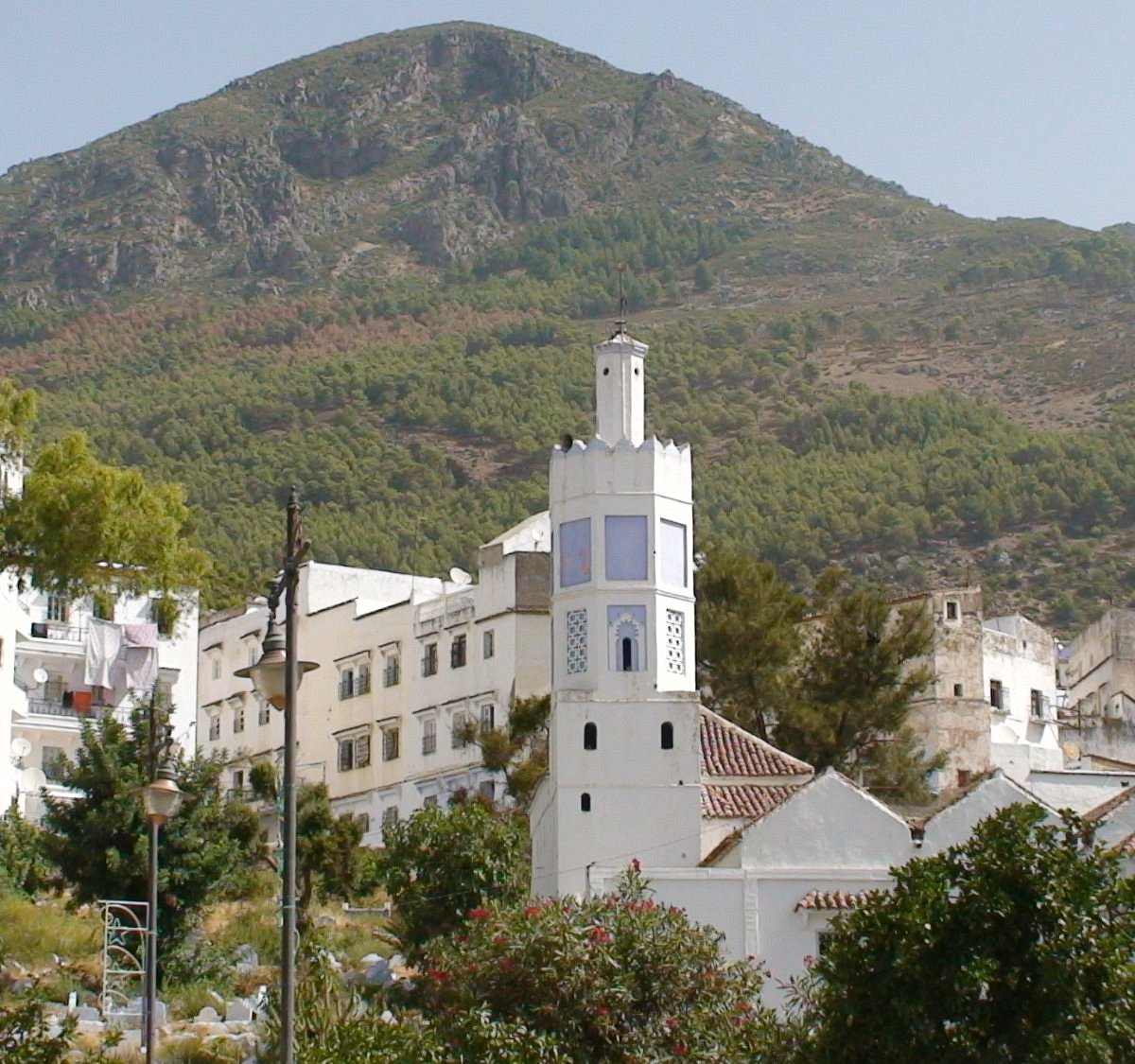
Place Outa Hammam
Place Outa Hammam is the central square of Chefchaouen, a city popularly called the Blue Pearl of Morocco. This square is characterized by a raised fountain surrounded by palm trees and lined with cafes, restaurants, and souvenir shops. It is a hub of activity and a great place to sit back and relax after a day of exploring the city. Hannah from That Adventurer says, "The square is busy day and night with locals and tourists milling about. It’s the perfect spot to sit, watch the world go by and enjoy a mint tea."
Aside from its aesthetic appeal, Place Outa Hammam also has historical significance. As mentioned earlier, Chefchaouen's Kasbah Museum is one of the key sights worth seeking out, and it is located just a stone's throw away from the square. The museum houses a collection of artefacts and exhibits that showcase the city's history and culture. Another interesting feature of the square is the clock tower, which dates back to the French Protectorate era.
Overall, Place Outa Hammam is a must-visit spot in Chefchaouen. It's a place where you can immerse yourself in the energy and vibrancy of the city, enjoy a refreshing cup of tea, and learn about its history all in one location. As Lauren from The Petite Wanderer notes, "Wandering through the winding passageways of Chefchaouen was like stepping into another world. The colours, the smells, and the energy were all so different. And while there’s plenty to do and see in this little Moroccan town, Place Outa Hammam was one of my favourite spots." [9][10]
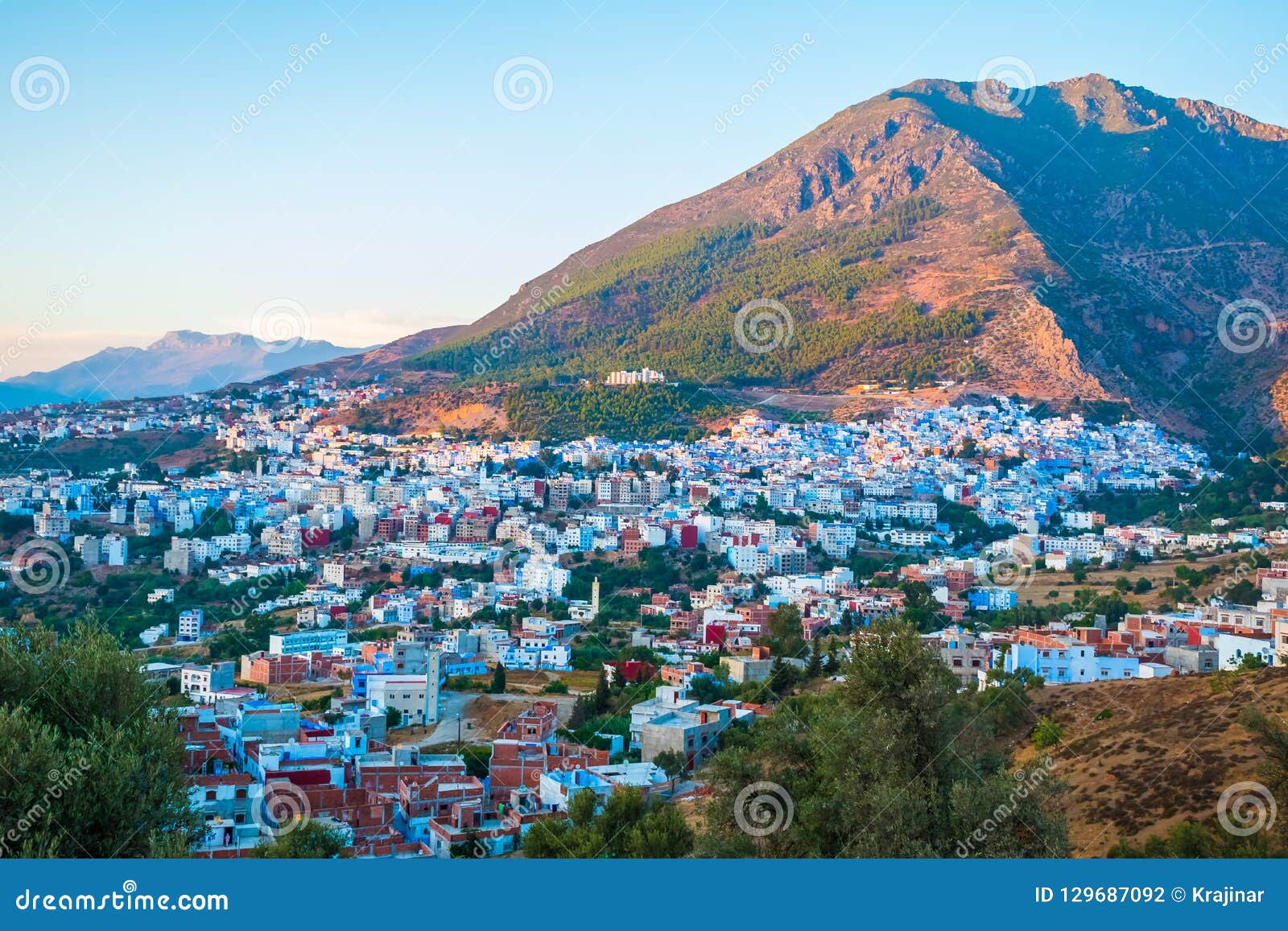
Shopping at Dar Moulay Idriss
When visiting the quaint Moroccan town of Chefchaouen, shopping at Dar Moulay Idriss is an absolute must-do. This traditional Moroccan market is located in the heart of the old town and features an array of local goods, textiles, and perfumes. Here's what you need to know about shopping at Dar Moulay Idriss:
- The market offers a vibrant and bustling atmosphere where locals and tourists haggle over prices and barter for the best deals.
- The shopkeepers are friendly and welcoming, always willing to offer suggestions or find what you want. They are known for their extensive knowledge of local products and can explain the origin and use of each item in detail.
- The market sells souvenirs and handicrafts such as pottery, rugs, leather goods, spices, teas, and essential oils. You can even find handmade jewellery and traditional Moroccan clothing at reasonable prices.
- One of the specialities of Dar Moulay Idriss is the locally made soap. You can find a wide selection of fragrant soaps from natural ingredients like olive oil, honey, and argan oil. The soap's ingredients are said to benefit the body and mind.
- The market was a highlight of my trip to Chefchaouen, says traveller Emily. "I loved walking through the colourful stalls and chatting with the vendors. I found some beautiful rugs to bring home as souvenirs."
Shopping at Dar Moulay Idriss allows visitors to experience the authentic culture of Chefchaouen and take home unique and beautiful souvenirs that represent the town's heritage. [11][12]

Grand Mosque
One of the most iconic landmarks in Chefchaouen is the Grand Mosque, built by Moulay Mohamed in 1560 and is the oldest and largest place of worship in the city. As with most religious sites in Morocco, non-Muslims are not allowed to enter the mosque, but the building itself is still worth admiring from the outside. Its beautiful architecture with intricate designs and patterns gives visitors a glimpse of the rich cultural heritage of Morocco.
According to the Ultimate Guide to Chefchaouen, "the Grand Mosque is an excellent example of Islamic architecture, and its unique minaret is said to resemble a lighthouse." Visitors can stroll around the mosque and admire its beautiful exteriors, which will leave them in awe.
If you're looking for a fantastic city view, head to the Kasbah Museum near the Grand Mosque. The museum's rooftop provides a panoramic view of the city and the bold blue buildings, truly a sight to behold.
The Grand Mosque is known for its architecture, religious significance, and historical importance, as it represents the city's rich past. As the comprehensive travel guide states, "Chefchaouen is a quirky town that is probably one of the prettiest in Morocco because of its blue-washed streets and buildings. That's why it got nicknamed the Blue Pearl of Morocco."
The Grand Mosque is a testament to Chefchaouen's rich cultural heritage, and the architecture and design of the mosque are nothing short of breathtaking. Its peaceful surroundings and divine beauty make it a perfect place to stroll and enjoy the city's old-world charm. [13][14]

Kasbah Museum
When visiting Chefchaouen in Morocco, one of the key sights to see is the Kasbah Museum. The museum is located in the medina's heart and housed in an old 18th-century kasbah. It offers visitors the chance to learn about the history of the town and its culture.
Inside the Kasbah Museum, you can explore the many different rooms dedicated to displaying artefacts and exhibits. These include traditional clothing, musical instruments, and ancient pottery. You can also get an insight into the daily life of the locals as you wander around the recreated living spaces.
One of the museum's highlights is the rooftop terrace that offers panoramic views of the town and surrounding mountains. From up here, you can see the distinctive blue-washed buildings that Chefchaouen is famous for and take some incredible pictures.
According to one visitor, "The Kasbah Museum is a must-visit in Chefchaouen. It's a great way to learn about the town's history and see some amazing exhibits. And the views from the rooftop are breathtaking!"
Overall, the Kasbah Museum is an integral part of the cultural heritage of Chefchaouen. It's a fantastic place to visit for anyone interested in the history of Morocco or looking to explore the local culture. So don't miss out on this fascinating attraction on your visit to the Blue City. [15][16]
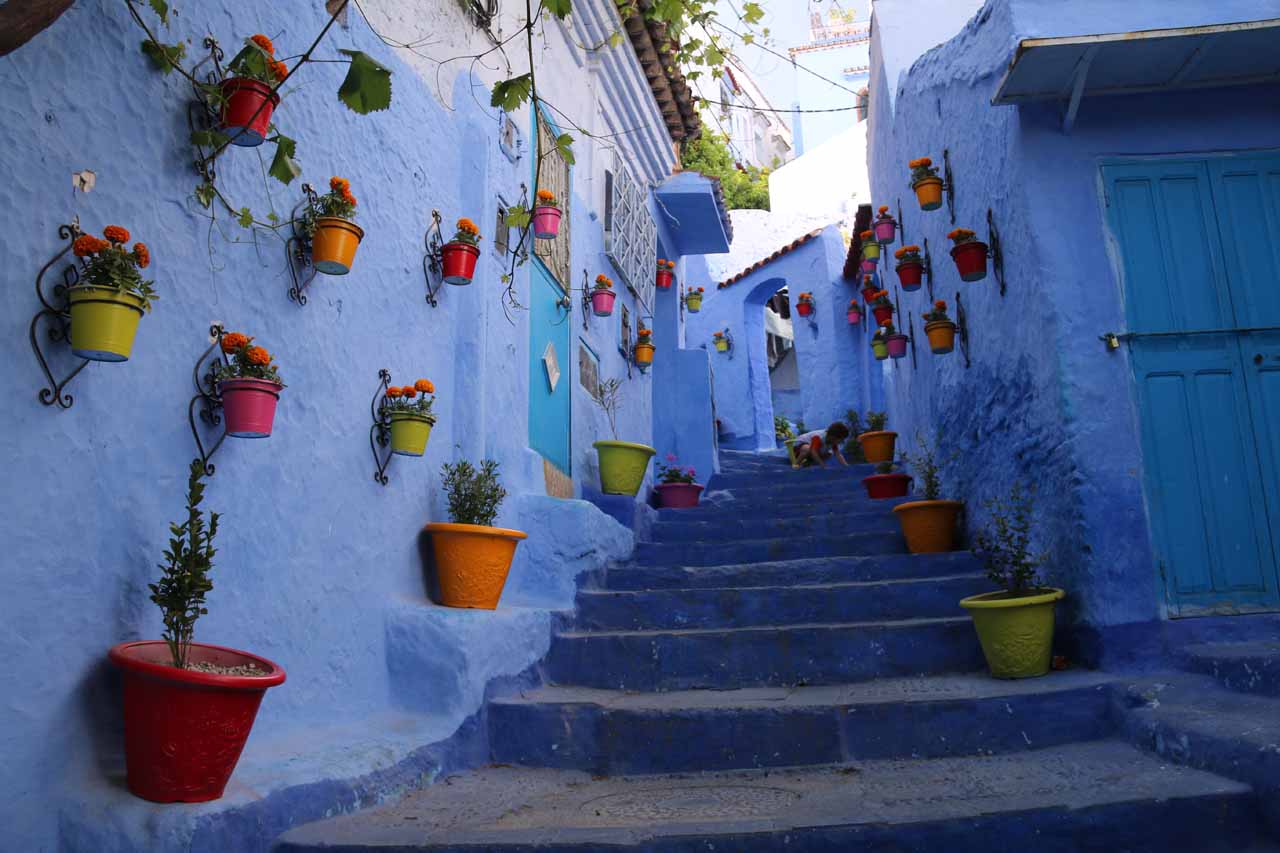
Ras El Maa waterfall
Ras El Maa is a waterfall in Chefchaouen, a small city in the Rif mountains of northwest Morocco. The waterfall is a popular destination for tourists drawn to its natural beauty and stunning views of the surrounding landscape. A visit to Ras El Maa is a must-do activity in Chefchaouen, as it offers a peaceful respite from the bustling old medina. The Source Ras el-Maa was my waterfalling excuse to talk about the magical blue medina of Chefchaouen. There was a building surrounding this spring so we couldn't see the source in its natural self. Nevertheless, it was still hard to believe that such a spring could produce so much water as the Ras el-Maa River would pass along the eastern fringes of the medina of Chefchaouen before eventually emptying into the Mediterranean Sea.
The waterfall is easily accessible by foot and can be reached by following a winding path that leads up from the medina. Visitors can enjoy a picnic or soak up the beauty of the surrounding landscape while lounging on the grass near the falls. Besides, Ras El Maa is nestled within an area of great natural beauty surrounded by lush greenery and mountainscapes. It is a great spot for taking photographs, especially during the early morning or late afternoon when the light is just right.
If you're looking for a more natural experience, hiking around the waterfall and enjoying nature is an option. It is advisable to wear comfortable shoes as the terrain around the falls can be uneven and rocky. The waterfall is one of the many natural wonders in and around Chefchaouen that will leave visitors with lasting memories. The author notes, "Ras El Maa was my waterfalling excuse to talk about the magical blue medina of Chefchaouen." Thus, the waterfall is integral to the overall experience, only adding to the town's charm and beauty. [17][18]

Relaxing in a hammam
Relaxing in a hammam is a popular activity in Chefchaouen and a great way to indulge in some self-care. The hammams in this town are traditional and authentic, meaning that they are an immersive cultural experience and a relaxing one. You can find hammams all over the city, but some of the best ones are inside the riads. These luxurious guesthouses often have private hammams that are open to guests.
One of the top-rated hammams in Chefchaouen is the Espace Yasmins Hammam. This establishment provides a wonderful spa experience and is very affordable. There are multiple options, including a full hour-long treatment that includes a steam room, a body scrub using black soap, and a massage using argan oil. The ambience is incredibly calming, and the staff are professional and friendly.
Another hammam that is highly recommended is Dar Elbakri. Located in the centre of the medina, this hammam is in a traditional Moroccan house that has been transformed into a cosy spa. The atmosphere is intimate, making it perfect for couples or solo travellers. This hammam features classic Moroccan treatments like the traditional black soap scrub and a lavender oil massage.
As you relax in the steamy, candle-lit space, you can feel the tension slip away from your muscles. Hammams are not just about getting cleaner or taking a break but rather an opportunity to disconnect from daily life's stresses and recharge mentally and physically. One patron eloquently described their experience at the Espace Yasmins Hammam: "It feels like you've travelled back in time, and your only job is to relax and enjoy the moment." [19][20]
